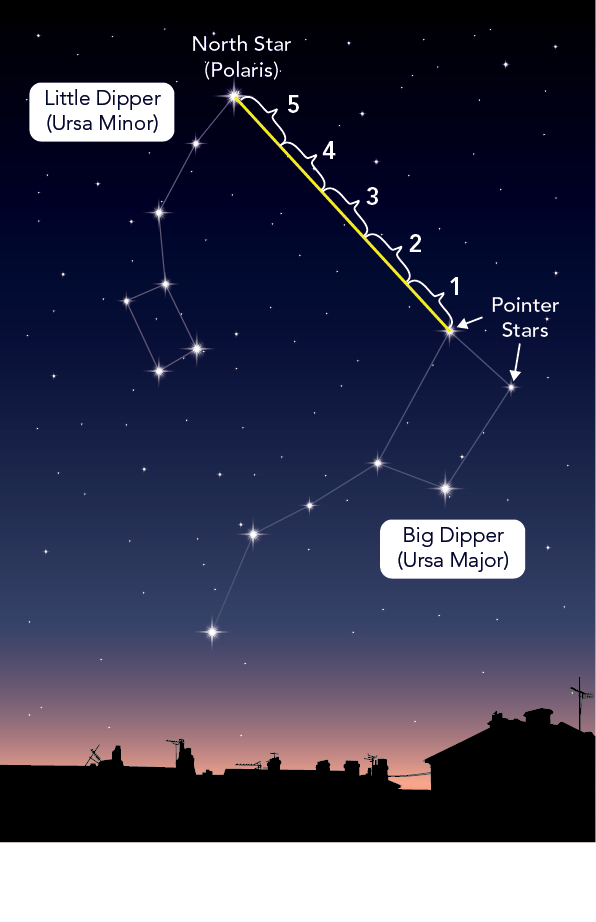The Big Dipper and Little Dipper are two of the most recognizable star patterns in the Northern Hemisphere. They are so named because they resemble a ladle or dipper, with the Big Dipper being the larger of the two. But did you know that these star patterns also serve as a map to help you navigate the night sky? With the Big Dipper Little Dipper Map, you can easily identify and locate other stars and constellations.

What is the Big Dipper Little Dipper Map?
The Big Dipper Little Dipper Map is a tool that helps stargazers locate other stars and constellations in the night sky. It uses the Big Dipper and Little Dipper as a starting point, with other stars and constellations located relative to their positions.
To use the map, you first need to locate the Big Dipper and Little Dipper in the sky. The Big Dipper is easy to spot, with its distinctive shape of seven stars, while the Little Dipper is a bit more challenging to find. Once you have located these two star patterns, you can use the map to find other stars and constellations.
How to Use the Big Dipper Little Dipper Map
Using the Big Dipper Little Dipper Map is relatively straightforward. Here are the steps:
- Locate the Big Dipper and Little Dipper in the sky.
- Identify the two stars that form the outer edge of the Big Dipper's bowl. These stars are known as Dubhe and Merak.
- Draw an imaginary line through Dubhe and Merak and extend it outwards. You will find a bright star called Polaris, also known as the North Star.
- Polaris is located at the end of the Little Dipper's handle. The Little Dipper itself is much fainter and harder to spot than the Big Dipper, but once you have found Polaris, you can use it as a guide to locate other stars and constellations.
- Many other stars and constellations are located near the Big Dipper and Little Dipper. For example, Cassiopeia, which is shaped like a W, is located near the Little Dipper.

What Can You See with the Big Dipper Little Dipper Map?
With the Big Dipper Little Dipper Map, you can see a wide range of stars and constellations. Here are just a few examples:
- Cassiopeia: This constellation is named after a queen from Greek mythology. It is located near the Little Dipper and is shaped like a W.
- Orion: This constellation is one of the most recognizable in the night sky. It is located near the Big Dipper and is shaped like a hunter with a belt and sword.
- Leo: This constellation is named after a lion and is located near the Big Dipper. It is shaped like a backward question mark.
- Taurus: This constellation is named after a bull and is located near Orion. It is shaped like a V and contains the bright star Aldebaran.
Tips for Stargazing with the Big Dipper Little Dipper Map
If you want to get the most out of stargazing with the Big Dipper Little Dipper Map, here are a few tips:
- Find a dark location away from city lights. Light pollution can make it difficult to see stars and constellations.
- Use a red flashlight to read the map and make notes. Red light preserves your night vision and won't interfere with your ability to see stars.
- Dress warmly and bring blankets or chairs to sit on. Stargazing can be a cold and uncomfortable activity, so make sure you are prepared.
- Use a telescope or binoculars to get a closer look at stars and constellations. These tools can help you see more detail and appreciate the beauty of the night sky.
- Take your time and enjoy the experience. Stargazing can be a peaceful and meditative activity that helps you connect with the natural world.
With these tips and the Big Dipper Little Dipper Map, you can have a fun and educational experience exploring the night sky.
Conclusion
The Big Dipper Little Dipper Map is a valuable tool for stargazers of all levels. It helps you locate stars and constellations and appreciate the beauty of the night sky. With a little practice and patience, you can use this map to explore the wonders of the universe.